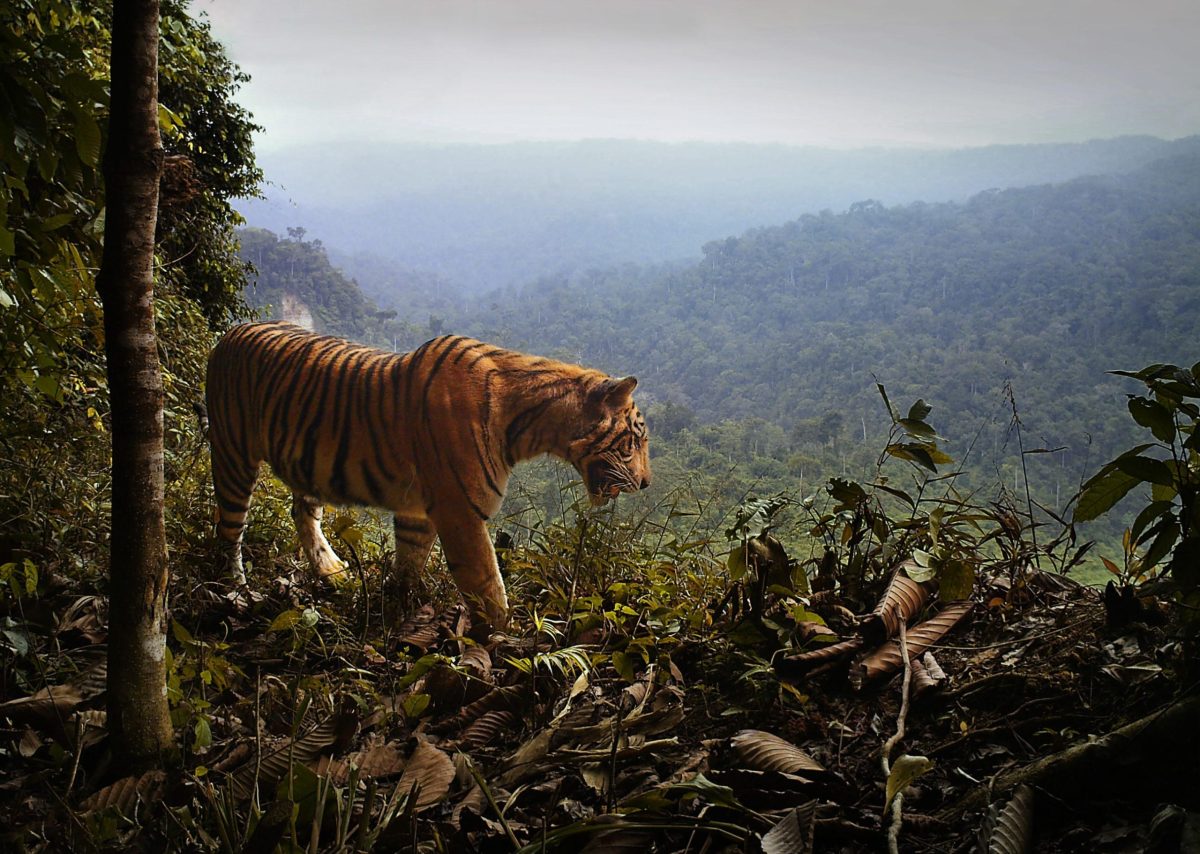Some of Asia’s largest animals, including tigers and elephants, are defying 12,000 years of extinction trends by coexisting with people, according to research led by the University of Queensland. Researchers combed through paleontological records to compare the past distribution of Asia’s 14 biggest species to their current populations in tropical forests.
Zachary Amir, a Ph.D. candidate at the University of Queensland’s School of Biological Sciences and the Ecological Cascades Lab, noted that populations of four species—tigers, Asian elephants, wild boars, and clouded leopards—increased in places with developed human infrastructure.
“These results show that, under the right conditions, some large animals can live nearby humans and avoid extinction,” Mr. Amir said.
“These results challenge the narrative within some conservation circles that humans and megafauna are incompatible. Globally there is a trend towards ‘trophic downgrading’, a term referring to the disproportionate loss of the world’s largest animals. Trophic downgrading is usually worst near humans because hunters target larger species. But in the case of tigers, elephants, wild boars, and clouded leopards, their Asian populations are higher nearby humans. This may be the outcome of tougher anti-poaching efforts in the national parks that are closer to human settlements and are more frequently visited by tourists.”
The research also revealed that deforestation was still having an effect on animals, with clouded leopard populations, in particular, seeing a strong decline in those areas.
But according to Mr. Amir, studies have shown that large animal species could live near humans in small habitats provided they were not hunted.
“Previously, there have only been a few examples of large Asian species thriving in small habitats near humans, notably in Mumbai, India where leopards in an urban park prey on stray dogs,” Mr. Amir said referring to a prior UQ study. “Thankfully, we found that a wider range of animals can coexist with humans.”
At one of their study sites in Singapore, where poaching has been eliminated and there are considerable forest restoration efforts, two large animal species are thriving again.
“Singapore has actually experienced the natural re-wilding of sambar deer and wild boars, which are now frequently observed in an urban forest, the Bukit Timah Nature Reserve,” Mr. Amir said. “If we replicate those protection efforts in larger forests and other counties, we may see positive impacts right around the world. But before this can happen, humans need to get our act together and limit poaching.”
While there are some positive results, UQ’s Dr. Matthew Luskin said the study also noted strong declines in tapirs, Sumatran rhinoceros, sun bears, guar, and other large animals.
“The key innovation of this work was to systematically investigate the population trends of many different wildlife species across the region,” Dr. Luskin said.
“Then we tested if all species showed consistent trends and if similar parks retained similar species. Remarkably, we found no two forests currently possess the same group of wildlife compared to thousands of years ago.”
Dr. Luskin said the research offered an opportunity to shape the future of nature.
“These results provide hope for wildlife in forests previously considered too far degraded or too close to cities,” he said. “Now we’re exploring new conservation strategies for these surprising places.”
Reference: “Megafauna extinctions produce idiosyncratic Anthropocene assemblages” by Zachary Amir, Jonathan H. Moore, Pablo Jose Negret and Matthew Scott Luskin, 21 October 2022, Science Advances.
DOI: 10.1126/sciadv.abq2307
The study was funded by the Smithsonian Institution’s ForestGEO program, Nanyang Technological University in Singapore, and the National Geographic Society.
Share your story or advertise with us: Whatsapp: +2347068606071 Email: info@newspotng.com












